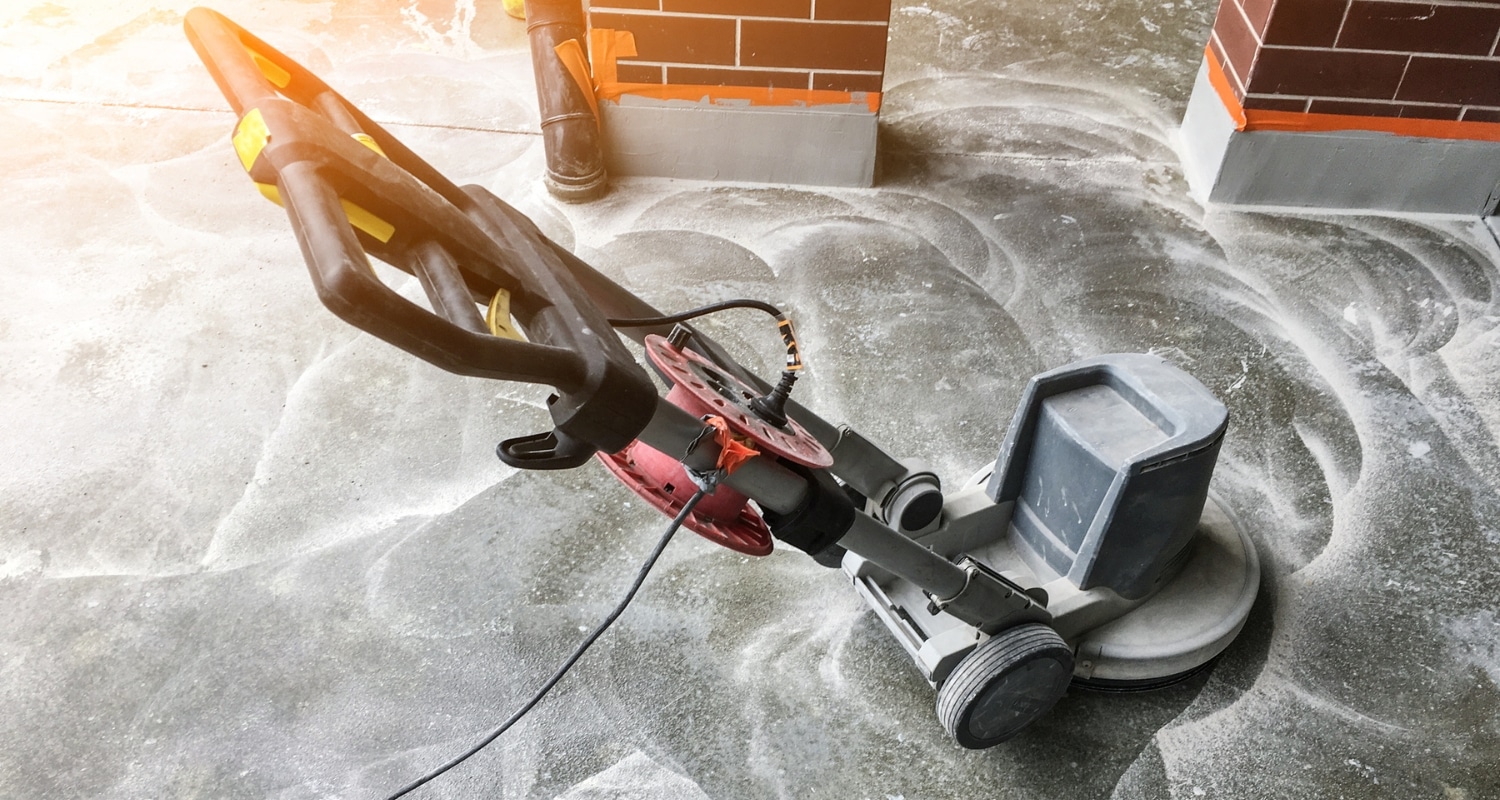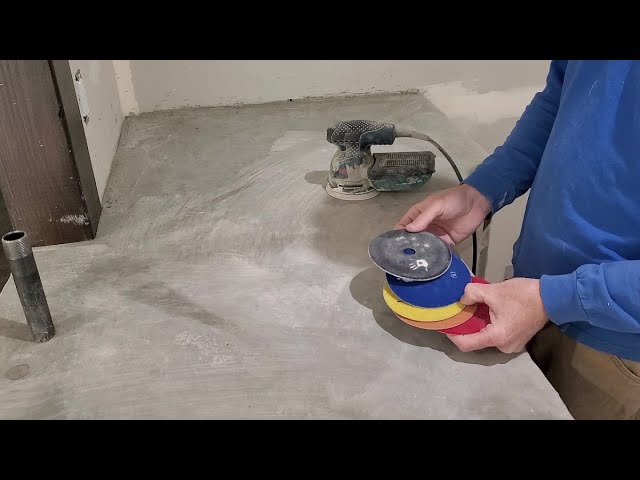Can you use an orbital sander on concrete? If you’re wondering whether this versatile tool is suitable for tackling concrete surfaces, you’ve come to the right place! In this article, we’ll explore the possibilities and limitations of using an orbital sander on concrete. So, buckle up and get ready to discover whether your trusty orbital sander can handle this tough material!
When it comes to sanding wood, an orbital sander is a go-to tool. Its random orbital motion and sanding pad make it perfect for smoothing out wood surfaces. But what about concrete? Well, here’s the scoop: While an orbital sander can be great for certain tasks, using it on concrete requires a bit more consideration. Don’t worry; we’ll break it down for you and give you the lowdown on whether an orbital sander is a friend or foe to your concrete surfaces.
Before we dive into the details, it’s important to note that using an orbital sander on concrete comes with some caveats. While it can be effective for small-scale jobs and certain applications, there are limitations to what an orbital sander can achieve on a concrete surface. But fear not! We’re here to explore those limitations, offer alternative solutions, and help you make an informed decision about whether or not to use an orbital sander on your concrete projects. So, let’s get started!

Can You Use an Orbital Sander on Concrete? Exploring the Possibilities
When it comes to home improvement projects, concrete surfaces can be quite challenging to work with. Whether you’re looking to refinish a concrete floor or smooth out rough patches on a concrete wall, you might be wondering if an orbital sander can be used on these surfaces. In this article, we’ll dive into the world of orbital sanders and examine whether they are suitable for concrete, along with tips and considerations for achieving the best results.
Understanding Orbital Sanders and Their Uses
Orbital sanders are versatile power tools that are commonly used for sanding wood, removing paint or varnish, and achieving a smooth finish on various surfaces. These sanders are equipped with a round sanding pad that moves in an orbital motion, mimicking the action of sanding by hand but at a much faster pace. They are known for their ability to create a smooth and uniform surface, making them a popular choice among DIY enthusiasts and professional carpenters alike.
While orbital sanders excel at working on wood, they may not be the ideal choice for concrete surfaces. Concrete is a much harder material and requires more aggressive sanding techniques. However, with the right approach and the use of suitable sanding attachments, an orbital sander can still be used effectively on concrete.
1. Can You Safely Use an Orbital Sander on Concrete?
Using an orbital sander on concrete can be done, but it comes with a few caveats. The main challenge lies in the hardness and abrasiveness of concrete. Traditional orbital sanders may not have enough power or the correct attachments to effectively sand concrete surfaces. However, there are specialized orbital sanders designed specifically for concrete that can handle the task more effectively.
If you choose to use a traditional orbital sander on concrete, it’s important to exercise caution and take additional safety measures. The hardness of concrete can put strain on the motor and components of the sander, potentially causing damage. It’s also crucial to wear appropriate personal protective equipment, such as safety goggles and a dust mask, as concrete dust can be hazardous when inhaled.
To achieve satisfactory results when using an orbital sander on concrete, it’s recommended to use a model with higher power and torque capabilities, along with specialized attachments or sanding discs designed for concrete surfaces. These attachments typically consist of diamond abrasives that are specifically designed to handle the hardness of concrete and provide effective sanding.
2. Tips for Using an Orbital Sander on Concrete
When using an orbital sander on concrete, there are several tips and tricks that can help you achieve the best results:
- Prepare the concrete surface by removing any loose debris or materials.
- Choose an orbital sander with sufficient power and torque for the task.
- Use specialized diamond abrasives or sanding discs designed for concrete surfaces.
- Start with a coarser grit sanding disc and gradually switch to finer grits for a smoother finish.
- Work in small sections and avoid applying excessive pressure, as this can cause damage to the sander or create uneven results.
- Regularly clean the sanding disc during the process to prevent clogging and maintain optimal performance.
- Be mindful of the dust generated during sanding and use a dust collection system or take appropriate measures to minimize its impact.
By following these tips and using the right approach, you can achieve a satisfactory result when using an orbital sander on concrete surfaces. However, it’s important to note that for extensive concrete sanding projects or if you’re dealing with particularly tough concrete, it may be more efficient to consider using other specialized concrete sanding equipment such as a concrete grinder or floor sander.
3. The Benefits and Limitations of Using an Orbital Sander on Concrete
While using an orbital sander on concrete can have its challenges, there are also potential benefits to consider:
- Versatility: If you already own an orbital sander, using it on concrete allows you to repurpose your existing tool for different projects, maximizing its utility.
- Cost-effective: Investing in a specialized concrete sanding tool can be costly, especially for occasional DIYers. Using an orbital sander can be a more budget-friendly alternative if you don’t anticipate frequent concrete sanding projects.
- Precision: Orbital sanders are known for their ability to provide a smooth and uniform finish. This level of precision can be beneficial when working on smaller or more intricate concrete surfaces.
However, it’s essential to be aware of the limitations of using an orbital sander on concrete surfaces:
- Time-consuming: Due to the hardness of concrete, sanding with an orbital sander can be a time-consuming process, especially for larger areas.
- Power and efficiency: Traditional orbital sanders may lack the power and efficiency needed for effective concrete sanding. Specialized equipment may yield faster and superior results.
- Surface damage: Applying excessive pressure or using the wrong sanding grit can cause surface damage or create uneven results on concrete surfaces.
Considering these benefits and limitations can help you make an informed decision about whether to use an orbital sander on your concrete project or explore other alternatives.
Key Takeaways: Can You Use an Orbital Sander on Concrete?
– Yes, you can use an orbital sander on concrete surfaces.
– Ensure that you have the right sanding discs for concrete.
– Use a variable speed orbital sander for better control.
– Start with a rough grit sandpaper and gradually move to finer grits.
– Keep the sander moving constantly to avoid uneven sanding.
Frequently Asked Questions
Are you wondering if an orbital sander can be used on concrete? Look no further! We’ve got the answers to your questions right here.
1. Can I use an orbital sander to polish concrete countertops?
While orbital sanders are great for many projects, they are not the best tool for polishing concrete countertops. Polishing concrete requires a more aggressive tool, such as a diamond polishing pad or a wet grinder. These tools are specifically designed to handle the hardness of concrete and provide the smooth, polished finish that you desire.
If you attempt to use an orbital sander on concrete countertops, you may find that it takes a long time and does not achieve the desired results. So, it’s best to invest in the right tools for the job to save time and effort.
2. Can I use an orbital sander to remove paint from a concrete floor?
Yes, an orbital sander can be a useful tool for removing paint from a concrete floor. However, keep in mind that the effectiveness of the orbital sander will depend on the type and condition of the paint. Thick or stubborn paint may require additional methods, such as sandblasting or chemical strippers, to fully remove it.
When using an orbital sander on a concrete floor, it’s important to use the appropriate sandpaper grit for the job. Coarse grit sandpaper will help to remove the paint effectively, while finer grits can be used for smoothing and preparing the surface for a new coating or finish.
3. Is it safe to use an orbital sander on a concrete wall?
Yes, it is safe to use an orbital sander on a concrete wall. However, keep in mind that concrete is a hard material, so you may need to use a more powerful orbital sander or apply additional pressure to achieve the desired results. It’s also important to choose the right sandpaper grit for the job, depending on whether you’re looking to remove imperfections, smooth the surface, or prepare it for painting.
When using an orbital sander on a concrete wall, make sure to follow the manufacturer’s instructions and wear appropriate safety gear, such as goggles and a dust mask, to protect yourself from flying debris and dust particles.
4. Can I use an orbital sander to level uneven concrete surfaces?
No, an orbital sander is not the right tool to level uneven concrete surfaces. If you have uneven concrete, it’s best to use a concrete grinder or a self-leveling compound specifically designed to level concrete surfaces. These tools and materials will provide better results and save you time and effort compared to using an orbital sander.
Using an orbital sander on uneven concrete may not only be ineffective, but it can also cause damage to the sander or result in an uneven finish. So, it’s always recommended to use the appropriate tools for the task at hand.
5. Can I use an orbital sander to remove scratches from a concrete floor?
Yes, an orbital sander can be used to remove scratches from a concrete floor. To successfully remove scratches, you’ll need to use diamond sanding pads or specific concrete sanding pads with a grit appropriate for the severity of the scratches. Start with a coarser grit to remove the scratches, then gradually work your way to finer grits for a smoother finish.
Keep in mind that deeper scratches or gouges may require additional methods, such as patching or resurfacing the concrete, to achieve a completely smooth and even surface. Always assess the extent of the damage before choosing the appropriate method for scratch removal.

Summary
So, can you use an orbital sander on concrete? The answer is yes, but with some limitations.
An orbital sander can be used on concrete to smooth out rough surfaces or remove paint. However, it is important to choose a sander with the right type of sandpaper and a high enough power to handle the tough concrete. Additionally, it’s crucial to wear protective gear like goggles and a mask to stay safe from the dust. In conclusion, using an orbital sander on concrete is possible, but be cautious and make sure to follow safety guidelines.
